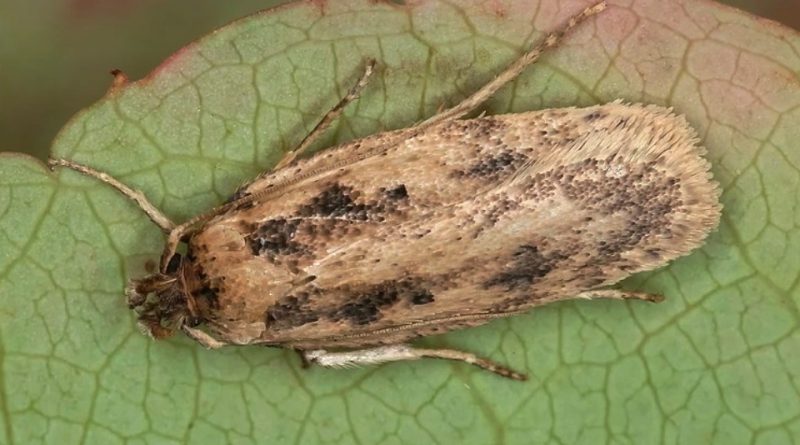Depressaria erinaceella
Depressaria erinaceella
The Depressaria erinaceella (Depressaria erinaceella, Staudinger, 1870) is a moth belonging to the Depressariidae family.
Systematics –
From the systematic point of view it belongs to the Eukaryota Domain, Animalia Kingdom, Subarign Eumetazoa, Superphylum Protostomia, Phylum Arthropoda, Subphylum Tracheata, Superclasse Hexapoda, Classe Insecta, Subclass Pterygota, Cohort Endopterygota, Superorder Oligoneoptera, Order Lepopterapressidea, Family Section Deeoptery to the Depressaria genus and to the D. erinaceella species.
The terms are synonymous:
– Hasenfussia erinaceella, Staudinger;
– Depressaria sardo niella, Rebel, 1936.
Geographic Distribution and Habitat –
The Depressaria erinaceella is a moth that can be found in a territory that includes France, Spain, Portugal, the Republic of Macedonia and, in Italy, Sardinia and Sicily. It is therefore a Mediterranean species whose larvae feed, in particular, on Cynara cardunculus and Cynara scolymus.
Morphology –
The Depressaria erinaceella can be recognized as adults have a wingspan of 20-25 mm.
The front wings are reddish brown with three blackish spots along the median line.
The larvae have a reddish color when young and yellowish-green when ripe, where they reach a length of 20 mm.
Attitude and Life Cycle –
Depressaria erinaceella is a phytophagous that overwinters at the stage of active larva on host plants by digging tunnels inside them. In the period of April it incrisalida in the ground and the adults flutter in the period from June-July until November.
The adults lay eggs on the lower leaf page or on the collar.
The Depressaria therefore makes only one generation per year.
The newborn larvae undermine the large leaf veins and gnaw the shoots and flower heads which are also smeared with excrement.
The flower heads are eroded along their axis or directly at the level of the inflorescence, both internally to it, and externally at the level of its bracts.
Ecological Role –
The Artichoke Depressaria is a particularly harmful moth especially in specialized crops, with poor rotation and lack of crop intercropping.
In these conditions the control of this phytophagous moth is difficult due to its endophytic characteristics.
For this reason, it is necessary to act promptly when the eggs are laid or, at most, at the first larval infestations, between October and November, when these are still found in the leaves as the larvae already inside the flower heads are difficult to reach.
The recommended fight is, however, the preventive one with agronomic interventions such as the tillage, carried out in April, to destroy the chrysalis and the destruction of the infested organs, especially the flower heads.
The intervention on phyllophagous larvae, with endotherapeutic products registered for the Artichoke, is not recommended as in this period we are in the presence of pollinating insects that would be, indiscriminately, killed creating imbalances in the biocenosis of the entomofauna and problems of decreased productivity of pollinated crops .
Guido Bissanti
Sources
– Wikipedia, the free encyclopedia.
– Russo G., 1976. Agricultural Entomology. Special Part. Liguori Editore, Naples.
– Tremblay E., 1997. Applied entomology. Liguori Editore, Naples.

